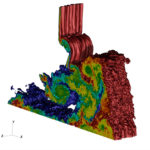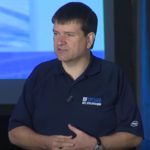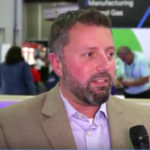Argonne has selected 10 computational science and engineering research projects for its Aurora Early Science Program starting this month. Aurora, a massively parallel, manycore Intel-Cray supercomputer, will be ALCF’s next leadership-class computing resource and is expected to arrive in 2018. The Early Science Program helps lay the path for hundreds of other users by doing actual science, using real scientific applications, to ready a future machine. “As with any bleeding edge resource, there’s testing and debugging that has to be done,” said ALCF Director of Science Katherine Riley.
Intel Xeon Phi Processor Programming in a Nutshell
In this special guest feature, James Reinders looks at Intel Xeon Phi processors from a programmer’s perspective. “How does a programmer think of Intel Xeon Phi processors? In this brief article, I will convey how I, as a programmer, think of them. In subsequent articles, I will dive a bit more into details of various programming modes, and techniques employed for some key applications. In this article, I will endeavor to not stray into deep details – but rather offer an approachable perspective on how to think about programming for Intel Xeon Phi processors.”
Caltech Upgrading Demo Cluster with Intel Xeon-Phi x200 Processor
Nor-Tech reports that Caltech is upgrading its Nor-Tech demo cluster with Intel Xeon Phi. The demo cluster is a no-cost, no-strings opportunity for current and prospective clients to test-drive simulation applications on a cutting-edge Nor-Tech HPC equipped with Intel Xeon Phi and other high-demand platforms installed and configured. Users can also integrate their existing platforms into the demo cluster.
Video: A Look at the Lincoln Laboratory Supercomputing Center
“Guided by the principles of interactive supercomputing, Lincoln Laboratory was responsible for a lot of the early work on machine learning and neural networks. We now have a world-class group investigating speech and video processing as well as machine language topics including theoretical foundations, algorithms and applications. In the process, we are changing the way we go about computing. Over the years we have tended to assign a specific systems to service a discrete market, audience or project. But today those once highly specialized systems are becoming increasingly heterogeneous. Users are interacting with computational resources that exhibit a high degree of autonomy. The system, not the user, decides on the computer hardware and software that will be used for the job.”
Managing Lots of Tasks for Intel Xeon Phi
“OpenMP, Fortran 2008 and TBB are standards that can help to create parallel areas of an application. MKL could also be considered to be part of this family, because it uses OpenMP within the library. OpenMP is well known and has been used for quite some time and is continues to be enhanced. Some estimates are as high as 75 % of cycles used are for Fortran applications. Thus, in order to modernize some of the most significant number crunchers today, Fortran 2008 should be investigated. TBB is for C++ applications only, and does not require compiler modifications. An additional benefit to using OpenMP and Fortran 2008 is that these are standards, which allows code to be more portable.”
MIT Lincoln Laboratory Takes the Mystery Out of Supercomputing
“Many supercomputer users, like the big DOE labs, are implementing these next generation systems. They are now engaged in significant code modernization efforts to adapt their key present and future applications to the new processing paradigm, and to bring their internal and external users up to speed. For some in the HPC community, this creates unanticipated challenges along with great opportunities.”
Dell EMC Powers Summit Supercomputer at CU Boulder
“The University of Colorado, Boulder supports researchers’ large-scale computational needs with their newly optimized high performance computing system, Summit. Summit is designed with advanced computation, network, and storage architectures to deliver accelerated results for a large range of HPC and big data applications. Summit is built on Dell EMC PowerEdge Servers, Intel Omni-Path Architecture Fabric and Intel Xeon Phi Knights Landing processors.”
IA Optimized Python Rocks in Production
“Intel recently announced the first product release of its High Performance Python distribution powered by Anaconda. The product provides a prebuilt easy-to-install Intel Architecture (IA) optimized Python for numerical and scientific computing, data analytics, HPC and more. It’s a free, drop in replacement for existing Python distributions that requires no changes to Python code. Yet benchmarks show big Intel Xeon processor performance improvements and even bigger Intel Xeon Phi processor performance improvements.”
Dell & Intel Collaborate on CryoEM on Intel Xeon Phi
In this video from SC16, Janet Morss from Dell EMC and Hugo Saleh from Intel discuss how the two companies collaborated on accelerating CryoEM. “Cryo-EM allows molecular samples to be studied in near-native states and down to nearly atomic resolutions. Studying the 3D structure of these biological specimens can lead to new insights into their functioning and interactions, especially with proteins and nucleic acids, and allows structural biologists to examine how alterations in their structures affect their functions. This information can be used in system biology research to understand the cell signaling network which is part of a complex communication system.”
Building for the Future Aurora Supercomputer at Argonne
“Argonne National Labs has created a process to assist in moving large applications to a new system. Their current HPC system, Mira will give way to the next generation system, Aurora, which is part of the collaboration of Oak Ridge, Argonne, and Livermore (CORAL) joint procurement. Since Aurora contains technology that was not available in Mira, the challenge is to give scientists and developers access to some of the new technology, well before the new system goes online. This allows for a more productive environment once the full scale new system is up.”











